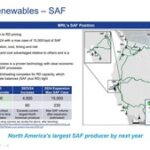EPA changes how it considers costs, benefits of CAA rules
Energy Disrupter
ADVERTISEMENT
The U.S. EPA on Dec. 9 released a final rule that changes the way the agency will consider the costs and benefits of all significant Clean Air Act rulemakings. The EPA said the impacted rulemakings will be accompanied by a benefit-cost analysis (BCA) using the best available scientific information, in accordance with best practices from the economic, engineering, physical and biological sciences while ensuring transparency.
The new rule contains three main parts. The first indicates the EPA will prepare a BCA for all future significant proposed and final regulations under the CAA. The agency said it anticipates significant regulations will include those with the largest annual impact on the economy; those that would disproportionately affect an industry, group or area; or those that are novel or relevant for other policy reasons. The second portion of the rule states that the BCA are to be developed in accordance with best practices from the economic, engineering, physical and biological sciences and describes several required elements of BCAs, including addressing all key elements of a cost-benefit analysis and making underlying data available to the public to the extend permitted by law. Third, the rule states the EPA must increase transparency in the presentation of the benefits and costs resulting from significant CAA regulations. In addition to clear reporting of the overall results of the BCA, the RPA will also require separate reporting of the public health and welfare benefits that are specific to the objective of the CAA provision under which the rule is promulgated.
To provide as much information and transparency as possible, the EPA also said it is finalizing a requirement to provide a description in each future rule’s preamble of how the agency considers the results of the BCA when the CAA provision or provisions under which the future rule is promulgated do permit consideration of the BCA. In addition, the agency said the new rule will ensure a consistent approach to the EPA’s CAA benefit-cost analysis and will provide transparency by requiring the generation of relevant information in all significant rulemakings.
Additional information is available on the EPA website.
















